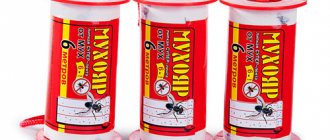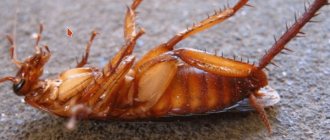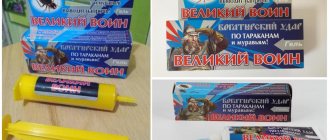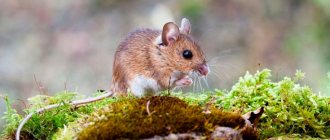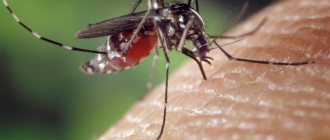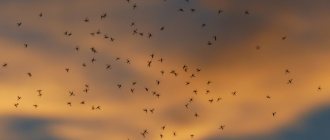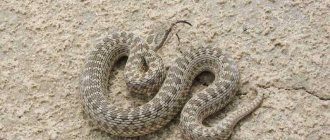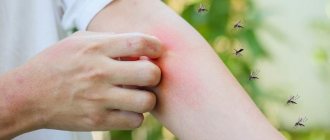Are there mosquitoes in Crimea and how dangerous are they for adults and children?
With the arrival of summer, most of our population begins to suffer from mosquito infestation. The question also arises of where to spend your vacation. Many people choose Crimea. It’s better to find out for yourself whether there are mosquitoes in Crimea before you go on vacation. If you find out that they do exist, you should think in advance about protecting yourself from these parasites. It is worth noting that these insects, which mercilessly suck our blood, live in the Crimea. However, in some regions of the peninsula there are still no pests.
Mosquito boom in Crimea
According to experts, there is nothing unusual about the mosquito invasion in the summer of 2022. A warm spring and plenty of rain in late spring and early summer contributed to the formation of many damp places. Regular rains have restored the normal population of these insects, which had significantly thinned out in previous dry years.
Another reason is the decrease in the number of swallows, swifts and mice. The preparation of Crimean residents in case of another summer without precipitation also made a contribution. Insects did not fail to take advantage of huge barrels of stored water to lay eggs in stagnant water.
Residents of many settlements demand that the authorities chemically treat the places where they breed. It is carried out periodically. Ecologists oppose this, pointing to a possible imbalance in the biosystem. Many birds and fish feed on the larvae of these insects, so massive chemical intervention can deprive them of food.
A comment
Head of the Interregional Department of Rospotrebnadzor for the Republic of Kazakhstan and the city of Sevastopol Natalya Penkovskaya:
“Mosquito breeding occurs in bodies of water with stagnant water. If barrels of water for irrigation are placed in a private household, then mosquitoes will use them for reproduction in the same way as reservoirs.
In the territory of the Crimean Federal District, anti-mosquito treatment of those reservoirs where mosquitoes that carry the malaria pathogen breed is mandatory. Such ponds, rates, lakes are certified. On the southern coast of Crimea, treatments have been and are being carried out. In addition, the sanitary and anti-epidemic commission under the Council of Ministers of the Republic of Kazakhstan gave recommendations and instructions to the heads of local administrations to carry out such treatments on their territory. But you need to understand: if, for example, a pond is privately owned, the municipality will not deal with it.
There is also a method of combating mosquitoes, such as spreading gambusia fish, which feed on mosquito larvae, in ponds, stakes, and lakes with standing water.”
Where do different species live in Crimea?
Mosquitoes live almost everywhere in Crimea. The appearance of them and their closest “relatives” divided the peninsula into “spheres of influence.” Actually, mosquitoes are especially rampant in the steppe regions of Crimea - Dzhankoy, Bakhchisarai, Simferopol and Razdolnensky.
The southern coast is favored by mosquitoes, whose bites leave painful marks. The midges occupied the coast of the Kerch Peninsula and the resorts of Western Crimea from Sak to the Black Sea. On the popular mountain trails of Crimea, painfully biting hollow bloodsuckers await tourists. On some beaches, vacationers are plagued by horseflies, and in the central regions you can find midges, but not ordinary ones, but blood-sucking ones.
There are no mosquitoes at all in Old Crimea and Evpatoria. There is a constant breeze blowing in these cities. For the same reason, there are few of these insects on the south coast beaches.
Habitats
Most of the bloodsuckers are found in wetlands, forests, fish farms, and rice fields. Under such conditions, females lay 150 eggs at a time and repeat the laying every 2 days. There are a huge number of pests in Yalta, Sudak, and Sevastopol. A little less in Simferopol, a mountainous area.
COUNTED 100 BITES
In Crimea, at the height of summer there is an invasion of mosquitoes. Bloodsuckers overpower people not only at night, but even during the day in terrible heat, which is unnatural for these insects.
I was on vacation in Feodosia, rented a house for a week, but returned home to Simferopol three days later - living there was simply unbearable, mosquitoes bit me from head to toe,” Daria Markina, a resident of the Crimean capital, complained to us. “I couldn’t sleep for several days because of the terrible itching; huge marks appeared that began to go away only after a week.
And such complaints are not isolated.
I love Koktebel, but this summer something strange is happening there,” says Moscow resident Olesya. — You can’t lie on the beach in the evening in a swimsuit; mosquitoes attack in swarms. After resting, I counted more than 50 bites on my body, and my friend counted about a hundred.
Vacationers in Gurzuf, as well as residents of the Nizhnegorsky and Krasnoperekopsky districts, also complain about the mosquito invasion.
It’s scary to go out into the garden in the evening, there are a lot of mosquitoes, and no repellent sprays can help, it feels like the insects are already used to them,” complained Nikolai, a resident of the village of Nizhnegorskoye.
Another equally pleasant phenomenon that vacationers noticed was hundreds of ladybugs flying on the beach in the village of Novofedorovka, Saki district, in Kach near Sevastopol and on Tarkhankut.
It’s impossible to lie on the beach, dozens of cows land on you, I understand that they don’t bite, but it’s still unpleasant, and what’s even worse is that there are some small biting midges in the sand,” Krasnodar resident Evgenia Zubova told us. “The only salvation from them is to stay in the water all the time.”
“PLEASE BE WAIT FOR ANOTHER 2-3 WEEKS”
Scientists say that insect infestations are not an anomaly, but a common occurrence that recurs from time to time. In one year, due to various seasonal features, there are more of them, in another - less.
There are more than 50 species of mosquitoes in Crimea, I assume that some multiplied due to the fact that we had heavy rains in May and June,” a professor at the Department of Ecology and Zoology at the Crimean Federal University told KP. Vernadsky Sergei Ivanov
.- In the small ponds, which dried up last year and the mosquito larvae should have died, moisture appeared, and the mosquitoes began to heal. Most mosquitoes are in the Karadag and Feodosia areas. But due to the intense heat, the “puddles” should soon dry up, and there will be much less blood-sucking animals.
As for the ladybugs, they should disappear from the beaches within 2-3 weeks. This year there are a lot of them due to the fact that the aphids on which they feed have proliferated.
Ladybugs constantly fly in search of new habitats for aphids, says Sergei Petrovich. - They are not very good flyers; usually, after flying a kilometer, they fall, often into the sea. They were washed ashore by the waves. That's why there are a lot of them on the beaches now. But they are harmless.
Rospotrebnadzor also does not consider the insect invasion to be anomalous and says that local authorities are responsible for cleaning the area.
Certified reservoirs where mosquitoes breed are subject to mandatory anti-mosquito treatment,” says Natalya Penkovskaya, chief state sanitary doctor for the Republic of Crimea and Sevastopol.
— Gambusia fish are released into the pond and feed on insect larvae. Such events are actively held on the South Coast.
By the way, in the private sector, mosquitoes can breed if there are barrels of water in the courtyards for watering plants and trees.
WHAT TO SAVE YOURSELF
If sprays do not help, experts advise using improvised means:
Apply regular ice to the bite site, which acts as a “local anesthetic.”
Soda lotions help a lot: make a solution of soda (1-2 teaspoons per glass of water), apply it to a bandage or gauze and apply it to the bite site or simply lubricate the affected areas with it.
A weak vinegar solution will help relieve the obsessive itching from midge bites: dilute 9% vinegar with water in a ratio of one to three and wipe the bite areas with it.
Kefir or sour cream soothes the skin and relieves itching.
Tea tree oil is considered an excellent remedy for mosquito and midge bites, as it helps cope with swelling and itching.
Tea bags can also help relieve swelling from bites.
If you look closely, the mosquitoes in the photo look like a fat, clumsy mosquito. However, in terms of the consequences of their bites, they are much superior to their light-winged relative, primarily in that they spread much more diseases dangerous to humans.
On the other hand, the habitat where mosquitoes live is much narrower than that of a mosquito, so not everywhere there is a danger of being bitten by this dangerous insect, one of which is shown in a very enlarged form in the following photograph.
One of the mosquito species
Malaria and tiger mosquitoes
Mosquito bites can cause worms. As for dangerous diseases, until recently scientists considered the probability of infecting people with them to be negligible. Thus, a malaria mosquito can indeed transmit this disease, but it must first encounter a malaria patient, whom it must bite.
However, recently the situation has changed for the worse: the so-called tiger mosquitoes have reached the peninsula. They are carriers of exotic diseases - Dengue and Zika fevers and chikungunya. They got their name from the black and white stripes on their body and legs. These striped insects are smaller in size than usual. In addition to them, the Asian (Korean) species Aedes koreicus was also discovered in Crimea.
By the way, not everyone knows that mosquitoes, carriers of dangerous diseases, fly up to people silently. The nasty mosquito squeak is produced by relatively harmless insects.
Biological characteristics
Mosquitoes belong to the subfamily of long-whiskered dipterous insects; they are also classified as part of the so-called vile complex. They occupy a habitat in which there are practically no negative temperatures, that is, these are the tropics and subtropics. In the territory of the former Soviet Union, these are Crimea, the Northern and Southern Caucasus, part of the Stavropol Territory and Kuban, and the southern regions of Ukraine. In total, there are more than seven hundred species of mosquitoes, many of which carry various dangerous diseases for both humans and animals.
Description
Mosquitoes are very small insects, rarely their body length exceeds two millimeters. The color scheme is also not saturated and varies in black and white from almost transparent to dark. The only thing that can color an insect is the drop of blood that it sucks from the victim.
Nutrition
In the normal state, mosquito larvae and adults feed on natural juices and plant sugars. But in order to develop oviposition, the female is forced to feed on blood; in this regard, nature has laid down some secret known to her. Apparently, plant food is not enough for the offspring to mature.
Attention! Male mosquitoes, like mosquitoes, do not drink blood!
Reproduction
Mosquitoes reproduce in a full cycle, that is, their generation involves a complete transformation in stages:
- egg;
- larva;
- chrysalis;
- imago.
Unlike the well-known bloodworm, a mosquito larva that lives in water, the offspring of mosquitoes do not develop in an aquatic environment, but simply in a humid environment at an optimal temperature of 25 to 30 degrees, depending on the species. Often their habitats are manure heaps, rodent burrows or poultry houses.
Difference from a mosquito
Many people mistakenly believe that these insects represent the same family, only they have different names; this is not true, and the differences between mosquitoes and mosquitoes are significant. We have already mentioned some of the differences in our story; we will list how a mosquito differs from a mosquito:
- Let's start with a squeak; unlike a mosquito, mosquitoes do not squeak. After all, the nasty mosquito sound is produced by the vibration of the wings, and fat mosquitoes don’t really like to fly. In Italy, for this reason, they are even called “pappa tachi,” which translates as “biting silently.”
- A sitting mosquito has wings folded at an angle to its body, while a mosquito's wings are parallel to it.
- Mosquitoes first fly to the victim and crawl over her body before biting, when, like mosquitoes, they move in small jumps.
- The flight qualities of mosquitoes are unimportant, so it is much easier to swat them than fidgety and agile mosquitoes.
The appearance of mosquitoes by time of year
The first mosquitoes in Crimea, as elsewhere, appear at temperatures of +10…+12 °C. The mosquito wave becomes widespread in May. As temperatures rise, their numbers increase, reaching a peak in June at 23 °C. In July and August, insects become fewer: at temperatures of 28 °C and above, mosquitoes can only be seen near wetlands with high humidity. There are even fewer of them in September. Mosquitoes disappear at temperatures of 10 °C and below: they hide near swamps, in hollows and under the bark of trees, as well as in crevices of wooden buildings. Larvae in the form of pupae overwinter in water.
Protection
On air
Inhabitants of central Russia and residents of areas of the country with a more severe climate may be at risk of encountering mosquitoes only during tourist trips to “warm countries.” To protect yourself on vacation, you need to undergo the vaccination recommended for visiting a particular area, and also remember the basic means of protection against mosquitoes and mosquitoes:
- Using special gels, ointments and aerosols before going outdoors. You need to treat all open areas of your body.
- Try not to leave the premises during morning and evening twilight - the favorite time for insects to emerge.
- When outdoors, try to stay away from damp areas, standing ponds or swamps, especially in cool weather.
- Wear loose clothing that covers as much of your body as possible - wide shirts, loose trousers.
- Try not to overheat or sweat; to do this, choose clothes in light colors, and also reduce the time you spend outdoors.
In the house
To protect your home, you need to use mosquito repellents:
- Mosquito nets;
- gauze;
- rare fabric or tulle.
How to get rid of mosquitoes in the house if they have already gotten there? The simplest aerosol products, like the well-known Dichlorvos, will help.
If your home or property has a swimming pool, do not allow the water in it to stagnate and begin to “bloom.” This will attract dangerous insects to the area, and then it will take a lot of trouble to get rid of mosquitoes.
In addition to all sorts of chemical or ultrasonic methods that are so popular nowadays, remember that man himself is the best mosquito destroyer. You can simply cope with trouble if:
- catch an insect;
- slam it with newspaper or a special cracker;
- slam it between your palms;
- Cover the surface of a table or other piece of furniture with a cup or glass.
When catching and killing mosquitoes by hand, do not let them bite you, otherwise the whole hunt may become useless.
Advice! It is necessary to destroy every last mosquito in the room, and then take measures to protect the room from repeated invasion.
How to protect yourself
Protection against all types of blood-sucking insects is the same. Premises in areas where they are active must have mosquito nets. Aerosols containing insecticidal and repellent agents should be applied to clothing. If possible, it should cover open areas of the body. Otherwise, special creams should be applied to them. Natural substances that repel mosquitoes include:
- dried chamomile flowers, stems and leaves;
- elderberry branches;
- juniper, clove, anise, basil, valerian and eucalyptus oils;
- sagebrush;
- pine cone smoke;
- camphor;
- citrus.
Itching at the site of the bite is eliminated:
- cold compress or ice;
- onion juice;
- lemon;
- honey;
- Apple vinegar.
If you have an allergic reaction, you should take antihistamines.
Harm
Now let's talk about the harmfulness that these small insects pose to humans. A mosquito bite is similar to a mosquito bite in its method of execution. The insect also selects the most vulnerable spot on the victim’s skin and pushes its proboscis there, pushing apart the tissues and helping with gnawing mites at the tip of the proboscis. At the same time, the insect injects saliva into the canal with anesthetics and anticoagulants.
Moreover, in the picture we presented the mildest version of the consequences of bites. Depending on the type of mosquito and personal intolerance, skin damage can be much more significant. And besides the obvious symptoms of mosquito bites, such as burning or scabies, larger troubles may await you.
Mosquitoes are carriers of dangerous diseases such as:
- leishmaniasis;
- bartonellosis;
- mosquito fever.
In addition, mosquito bites often cause such dangerous skin lesions as phlebotoderma.
